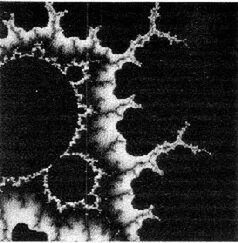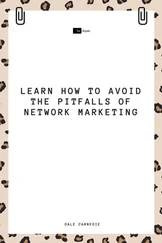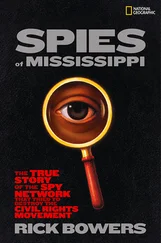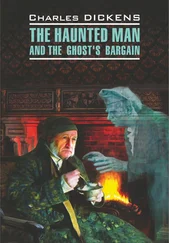Recently married, and with the new title of “Lady,” Antoinette was allowed to appear at Charles VIII’s court. She became a fixture there: her bright smile, loud laugh, and red cheeks (she probably suffered from acne rosacea) were so recognizable that when she spent two years out of society, in bed with tuberculosis (from which she eventually recovered), her absence was noted in the Queen’s own diary. Antoinette’s bedridden years coincide almost exactly with the dates of Columbus’s second voyage.
Charles’s account of Antoinette’s years with Columbus mirrors de Poisson’s biography, with some cross-dressing thrown in. Charles believed that Antoinette disguised herself as a boy and named herself Luke Wadsworth — he discounts the poisoning tale — because she was desperate to live like a man. Charles thought her “gender frustrations,” in his words, later prompted her to create the false maps.
Despite the allowances she had in her personal life, due to her permissive guardian and the scarlet fever — induced sterility that kept her from bearing children, Antoinette was emotionally dissatisfied and craved power. dWhen she returned from her ocean-crossing and gender-crossing adventure, and had to put dresses on and go about as a lady again, she was so frustrated by polite society that she started producing her maps with rampant falsities as a way to get revenge on the society she resented. She tricked the explorers and map collectors, firstly to be cruel, and secondly to frustrate them as they did her. e
Charles and de Poisson’s biographies were largely forgotten by academia. Only a few responses popped up over the years. As an undergraduate at the University of Paris in Sorbonne, a young Simone de Beauvoir wrote a scathing feminist critique of Charles’s theories of Antoinette’s “gender frustration.”
In 1989, a group of PhD students from Berkeley College’s history department published a paper on Monson in the Journal of American History , describing the Charles and de Poisson versions of Monson’s biography. They came up with a new theory, that de Poisson’s Monson died when he returned to Nuremberg after Columbus’s voyage and his wife, poor and starving, had to finish and publish his maps herself to survive. The falsities on the maps, in their estimation, came from her lack of knowledge, not any intentional attempt to mislead the public. They criticized Charles for not acknowledging the fact that the births of lower class farmers, like de Poisson’s Monson, were sometimes not recorded by the state. Also, when men were exiled, sometimes their birth certificates, and those of their family, were burned. Either of those customs could account for Antoine’s lack of documentation.
The mystery of Monson’s identity might never be solved. De Poisson’s lowborn man who swindled his way onto Columbus’s ship is as likely to be real as Charles’s cross-dressing aristocrat. “The mystery is more interesting than any answer to the mystery,” the Situationist Ivan Chtcheglov wrote in his private, unpublished diary on the subject of both Monson and life in general. fChtcheglov became interested in Monson during the five years he spent incarcerated at a mental hospital in Paris, following his attempt to blow up the Eiffel Tower because the lights shone into his apartment at night, making it difficult for him to sleep. The mental hospital’s library, stocked with cast-offs from the Université de Paris , included a copy of Charles’s New Biography . Chtcheglov smuggled the book out of the hospital when he was released, then tracked down a copy of de Poisson’s biography through his friends at the university.
Molly Metropolis found Monson through Chtcheglov, during Molly’s first frantic inhalation of Situationist texts, when she read some of Chtcheglov’s letters in which he indicated he kept a diary while he was committed. Determined to track it down, Molly contacted Chtcheglov’s daughter, Lynnette. She agreed to sell Molly her father’s diary, and Molly received a bounty in return: Chtcheglov’s copies of both Monson biographies had been attached to his diary by rubber bands.
Inspired by the mystery of Monson’s life, Molly Metropolis asked Berliner to sign the screen prints he made for her as either Antoine or Antoinette Monson. She also seems to have established a legal identity for Antoinette Monson. As I was researching Molly’s connection to the historical mystery figure, I found Monson in Chicago, on a deed. An Antoinette Monson owned an office building, which was damaged in some kind of fire in early 2010—though when Taer began searching for Berliner, the building had not yet burned.
Marie-Hélène Kraus told Anna Kirkpatrick, “As a Situationist, walking somewhere doesn’t count if you have a destination in mind.” I wonder how Kraus would’ve weighed in on Taer and Nix’s walking through Chicago; they had a destination in mind but they didn’t know where the destination was. Most likely, Kraus would’ve approved. Their progress was slow; the conditions were terrible. Chicago has a reputation for rough winters because of the wind, which both lowers the temperature and blows the snow and freezing rain into the faces of pedestrians. Sometimes the wind is so strong that the rain falls horizontally. According to Taer’s notes, she and Nix suffered through at least one day of horizontal rain. Once, to avoid getting hit by hailstones the size of quarters, they had to huddle for twenty minutes in a narrow doorway that smelled like urine. One evening it was warm enough that it rained instead of snowed, but overnight the rain froze to black ice on the sidewalks, which was hard to see and easy to slip on. The temperature made their jeans feel like sheets of ice against their legs. Taer loved to complain about the cold.
They had problems with Berliner’s map, too. They realized quickly that it probably wasn’t drawn to scale. Even with Davis’s notes, they weren’t sure which streets the maps depicted. Berliner had drawn the street that Davis had labeled North Clybourn Avenue vertically, but on a regular street map aligned to a compass, North Clybourn ran diagonally from northeast to southwest. Most of the streets that crossed North Clybourn adhered to a strict north-south, east-west grid system, so when the streets hit North Clybourn, they formed a row of triangles. Berliner’s map depicted one of those triangles, a very strange one where two of the streets didn’t actually meet. Taer and Nix interpreted this as Berliner having walked through most of the triangle except half a block on one street. It was either that, they assumed, or he simply drew the triangle sloppily. They tried to figure out which triangle of streets Berliner had drawn on his map. They hiked the same streets over and over again, talking about music, people in college they had slept with who had then avoided them in the dining hall, and their first big breakups. Sometimes they walked silently because they had to wrap scarves around their mouths and noses to block out the snow and wind. They slipped on ice and fell.
As February progressed, Taer became more frustrated as their search proved futile. She also gained some weight, as she always did in winter, which made her cheeks and breasts look rounder, but also upset her. Nix slept on the couch more often; they had lethargic, sometimes orgasmless, sex. Nix avoided walking around with Taer, and Taer let her recede. Taer went out alone, moving aimlessly through the snow, barely even looking at the buildings. She walked every single triangle of streets off North Clybourn but couldn’t distinguish the building that would crack open and spill out secrets from all the other offices and apartments and storefronts. She sometimes left the triangles, refusing to turn at a stoplight when she felt like continuing on straight ahead. She was stuck.
Читать дальше












